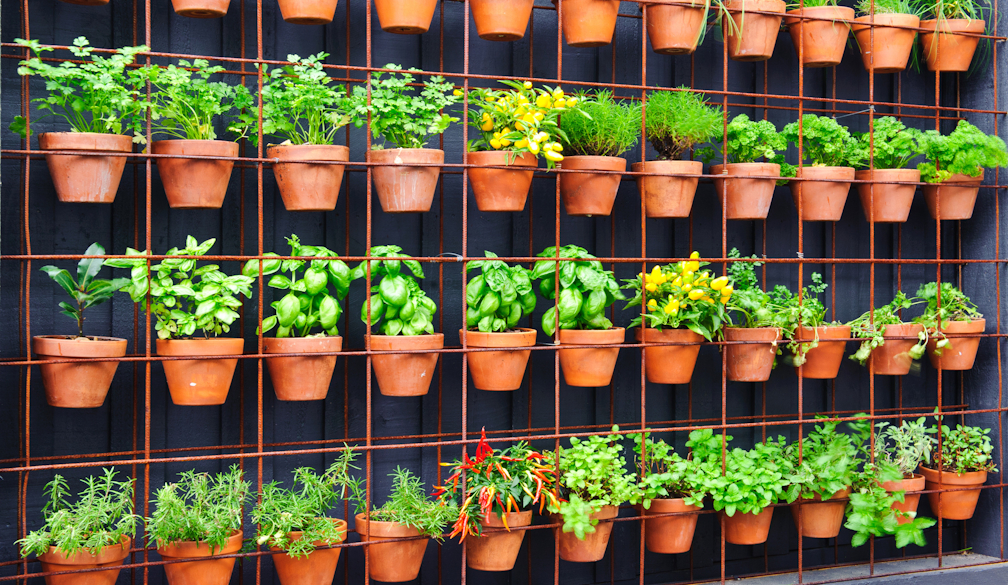Gardening In Small Spaces: 10 Tips And Tricks

Embarking on a gardening adventure doesn’t require acres of land or sprawling estates; it begins with the smallest patch of sunlight reaching through your window, the tiniest balcony ledge, or the modest corner of your urban dwelling. This is the essence of small-space gardening—a celebration of potential in the most compact of areas, a testament to the boundless creativity and resilience of gardeners who see opportunity where others see limitation.
That said, this guide delves into the strategies and secrets of small-space gardening, offering practical advice for maximizing every inch of available space.
- Go Vertical
One of the most innovative ways to overcome the challenge of limited ground space is to think upwards. Vertical gardening, a method that leverages the vertical plane to cultivate plants, incorporates structures such as shelves, hanging baskets, trellises, and wall-mounted planters.
A noteworthy example of this innovative approach is Maze vertical garden solutions, which offers a range of products designed to optimize vertical spaces in any garden setting. These solutions not only save valuable floor space but also add an appealing aesthetic dimension to your garden.
- Choose The Right Plants
Selecting the right plants is crucial for small-space gardening. Dwarf varieties and plants that have a compact growth habit are ideal as they require less room to flourish. Herbs like basil, chives, and mint grow well in confined spaces and can be easily maintained in small pots.
Vegetables like cherry tomatoes, radishes, and lettuce also adapt well to limited space, especially if chosen for their vertical growing capabilities or compact size. The key is to pick species that will thrive in your specific conditions, considering factors like sunlight, humidity, and temperature.
- Utilize Containers
Containers are the cornerstone of small-space gardening. They are incredibly versatile, allowing gardeners to make use of any available space, including balconies, patios, and even windowsills. The beauty of container gardening lies in its flexibility; containers can be moved to capture more sunlight or to accommodate changing seasons.
Furthermore, it's important to choose containers with good drainage and to select a size that will accommodate the mature size of the plant. With the right container, anything from a single herb to a miniature fruit tree can thrive in a small space.
- Make Use Of Companion Planting
Companion planting is a method that involves placing plants together that benefit each other in some way, such as deterring pests, enhancing growth, or improving flavour. In small spaces, this practice can be especially beneficial as it maximizes efficiency.
For instance, planting basil near tomatoes can help repel pests while also enhancing the flavour of the tomatoes. Similarly, marigolds planted throughout a garden can deter pests while adding a splash of colour. Companion planting is a natural way to enhance your garden's health and yield without needing extra space.
- Optimize Watering Techniques
Efficient watering is critical in small-space gardening, where soil in containers can dry out quickly. Drip irrigation systems and self-watering planters are two solutions that ensure plants receive the moisture they need with minimal waste.
Drip irrigation delivers water directly to the roots of the plants, reducing evaporation and water runoff. Self-watering planters have reservoirs that allow plants to absorb water as needed, which is particularly useful for gardeners with busy schedules. Proper watering techniques ensure that every drop counts, keeping your garden lush and healthy.
- Improve Soil Quality
The quality of soil in small-space gardens, particularly in containers, is vital for plant health. Premium potting mix enriched with compost provides a rich, nutritious foundation that supports robust plant growth. Since containers can limit the nutrients available to plants, adding compost can reintroduce essential organic matter, improving soil structure and water retention. Regularly refreshing the soil in your containers or adding natural fertilizers can also help maintain nutrient levels, ensuring your plants have everything they need to thrive.
- Prune Regularly
Regular pruning is not just about maintaining the shape and size of your plants; it's also about encouraging healthy growth. By removing dead or overgrown branches, you can help your plants direct their energy towards producing more flowers or fruits. Pruning can also increase air circulation and light penetration, reducing the risk of disease. For fruit-bearing plants, such as tomatoes or peppers, pruning helps the plant focus its resources on producing a more bountiful harvest.
- Attract Pollinators
Attracting pollinators such as bees, butterflies, and birds is crucial for garden health, especially in small spaces where every plant counts. Planting a variety of flowers that bloom at different times ensures a steady supply of nectar, attracting a diverse array of pollinators. Lavender, salvia, and zinnias are excellent choices for attracting bees, while butterfly bushes and milkweed are favourites of butterflies. In addition to supporting pollination, these plants add vibrancy and life to your garden, creating a mini ecosystem right in your own space.
- Experiment With Hydroponics
Hydroponics is an innovative solution for gardeners lacking in soil space. This soilless method of gardening uses nutrient-rich water to grow plants, which can be set up in a vertical configuration to save space. Hydroponic systems are efficient, use less water than traditional gardening, and can produce high yields in a compact setup.
- Be Patient And Persistent
The most important tip for small-space gardening is to be patient and persistent. Gardening in limited areas comes with its set of challenges, but with perseverance, even the smallest spaces can yield incredible results. Celebrate each new leaf, flower, and harvest as a victory, and don't be afraid to experiment and learn from setbacks.
Conclusion
The journey towards creating a vibrant oasis in a limited area is one of creativity, adaptability, and determination. By applying these principles, enthusiasts can unlock the full potential of their small spaces, proving that with the right approach and mindset, any space, no matter how small, can become a source of beauty, sustenance, and joy.









